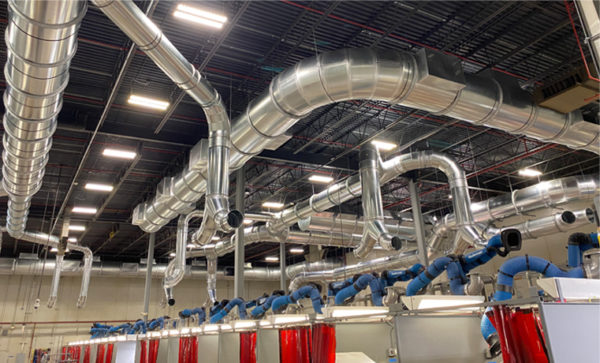Specific OSHA 1910 Standards Apply to Dust Collection
The government body of Occupational Safety and Health Administration (OSHA) is diligent at enforcing compliance with standards that maintain well-being in the workplace.
While their extensive requirements cover all kinds of businesses, they have several standards that apply directly to dust collection in industrial facilities.
Summit is well aware of these standards, and we ensure that our dust collection solutions place our clients’ companies well within OSHA’s compliance.
OSHA 1910 Dust Collection Standards for Three Common Industrial Workplace Hazards
Set forth by OSHA in 1971, this sweeping set of standards applies to workplace hazards for most industrial workplaces. There are requirements within OSHA 29 CFR 1910 (or OSHA 1910) that cover just about any potential threat to employee health and safety found in industrial work.
However, three hazards outlined within the regulations have profound impact specific to dust collection.
OSHA 1910 provides specific standards for explosive and combustible dust hazards, silica dust exposure, and hexavalent chromium exposure. All of these hazards can be found in certain types of industrial dust.

Explosive and Combustible Dust
OHSA 1910 defines … “These dusts include, but are not limited to: metal dusts such as aluminum and magnesium; wood dust; coal and other carbon dusts; plastic dust and additives; bio-solids; other organic dust such as sugar, flour, paper, soap, and dried blood; and certain textile materials.”
The proper handling and disposal of combustible dusts receives extensive attention under OSHA’s guidelines, and for good reason. Catastrophic events have occurred as a result of combustible dusts in industrial facilities, even within recent years.
Should an OSHA inspector discover combustible dust within a facility, a hazard analysis will be conducted to determine the exact properties of the dust, including explosibility. The findings of this analysis will indicate what fire prevention, explosion protection, and dust collection equipment best suit the facility’s needs.
Silica Dust Exposure
Crystalline silica is part of just about every known rock on Earth, and silica dust is found in most industrial abrasives, making silica dust a serious cause for concern especially in metal fabrication facilities.
Silica dust is small enough to enter airways in the lungs and becomes embedded within the lung tissue. Scarring, lung cancer, and silicosis are potential consequences of silica dust exposure in a workplace.
OSHA issued a new silica rule in 2016, updating regulations established as part of OSHA 1910, that requires lower levels of silica dust exposure in workplaces and also more stringent compliance monitoring procedures.
All facilities whose processes could potentially disperse silica dust and create silica dust exposure must have dust collection systems in place that are designed specifically for silica dust capture. Failure to comply can be met with fines and other serious penalties.
Hex Chrome Exposure
Hexavalent chromium (or hex chrome) is a carcinogenic substance produced during welding or other types of industrial “hot work” on stainless steel and other metals that contain chromium.
In 2006, OSHA reduced the permissible level of exposure in the workplace to 5 micrograms per cubic meter of air time-weighted average in an 8-hour work shift – which is one tenth of the previous level.
All facilities where workers could be exposed to hex chrome must perform air monitoring, fume extraction, and dust collection that meets OSHA’s stringent standards. Dust collection equipment in these scenarios must feature very high filtration efficiencies and maintain them copiously in order to comply.

